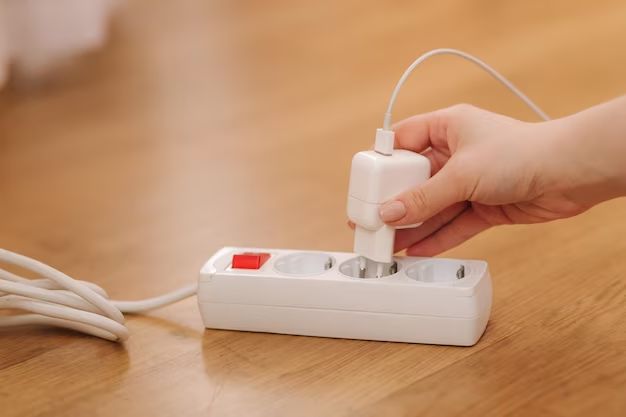Splicing an extension cord can seem like a quick fix when your cord isn’t long enough to reach an outlet or device. However, splicing cords can be dangerous if not done properly. In this article, we’ll examine when it is and isn’t okay to splice an extension cord, the safety risks, and how to properly splice a cord if necessary.
Page Contents
Is it ever okay to splice an extension cord?
In general, it is not recommended to splice extension cords. Splicing creates a weak point in the cord that can lead to overheating, electric shocks, fires, or other hazards. The safe and legal solution is to use a single, continuous length of cord in the proper gauge for your needs.
However, there are some exceptions where splicing may be acceptable:
– Temporary connections: It may be okay to carefully splice a cord for a temporary setup where running a new cord isn’t practical. Make sure it’s only used for a short time.
– Cord repair: Splicing may be used to repair a severed or damaged extension cord, especially if it’s a specialty cord that would be difficult to replace. This repair should be done by a qualified electrician.
– Proper connections: With the right materials and connections, splicing extension cords can be done safely according to electrical codes. But this should only be done by licensed electricians.
So in summary, splicing extension cords is not recommended in general, but may be acceptable for temporary or repair uses if done properly by a qualified person. Never attempt to splice cords if you’re unsure of the proper technique.
What are the risks of splicing extension cords?
Splicing extension cords incorrectly can introduce several serious risks:
– **Fire hazard**: Incorrect connections can loosen over time with cord movement, causing electrical arcing, overheating, and potential fires. This risk increases with high-load devices.
– **Electric shock**: Exposed wires in subpar splices pose a shock risk, especially if water is present. Even small shocks can cause injuries.
– **Equipment damage**: Too much resistive heat in a splice can damage connected devices and appliances. A poor splice can also impact voltage and flow.
– **Electrocution**: In a worst case, severe electrical shocks from bad splices could potentially be fatal. This is especially true in wet areas.
– **Code violations**: Improper cord splicing often violates electrical codes and safety standards, which can jeopardize insurance coverage and lead to lawsuits if accidents occur.
The overall risk depends greatly on the quality of the splice job. But in general, splicing should be avoided due to the potential hazards. Using a single, continuous cord is always the safest option.
How to properly splice an extension cord
Again, splicing extension cords is not recommended. But if it must be done, here are some key steps to follow:
– **Match wire gauge** – The new wire you splice in must have the same gauge or thicker wire as the original cord. If it’s thinner, it can overheat.
– **Choose the right connectors** – Use twist-on wire connectors or high-quality insulated spring connectors. Avoid electrical tape alone.
– **Keep it straight** – The finished splice should be straight and not bent. Bends put strain on the joint.
– **Overlap enough** – Overlap at least 1 inch of wire inside connectors to ensure a secure connection.
– **Insulate thoroughly** – Wrap the joint in electrical tape and/or heat-shrink tubing so no copper is exposed.
– **Test it** – Check continuity of the ground wire. Shake the cord to ensure the splice is tight.
– **Label it** – Mark the cord near the splice so others avoid stressing that area of the cord.
– **Consider relief** – For frequent handling, add a cord relief sleeve or knotted cord cover at the splice to reduce strain.
– **Keep it dry** – Never use a spliced cord in wet areas or immerse it in water. Moisture increases the shock hazard.
Again, splicing should only be done in temporary or emergency situations by qualified persons. An electrician can ensure proper technique and codes are followed.
Alternatives to splicing extension cords
Here are some safe options to avoid splicing extension cords:
– **Buy a longer cord** – Choose a ready-made cord in the required length for your needs. Match the wire gauge to the amp rating.
– **Use multiple cords** – Safely link 2 or more factory-made cords instead of splicing. Use multiple outlet extenders if needed.
– **Install new outlets** – Hire an electrician to add permanent outlets closer to devices needing power.
– **Use cord covers** – Protect cords stretched across walkways with covers that prevent tripping hazards and cord damage.
– **Consider wireless** – For low-power devices, use wireless transmitters to avoid the need for long extension cords.
– **Upgrade circuits** – Have an electrician run dedicated 20 amp circuits for high-draw shop tools needing long cords.
Following basic safety practices, inspecting cords routinely, and replacing damaged ones can also reduce the temptation to splice in problematic situations.
Conclusion
Splicing extension cords is generally not recommended, as it creates safety hazards and code violations if not done properly. For temporary needs, splicing may be acceptable using proper materials and techniques, but permanent situations require running a new, continuous cord of sufficient length and gauge. With some forethought and electrical upgrades, splicing extension cords can always be avoided in favor of safer options. If you have concerns about an existing spliced cord, have it inspected by a qualified electrician right away.
